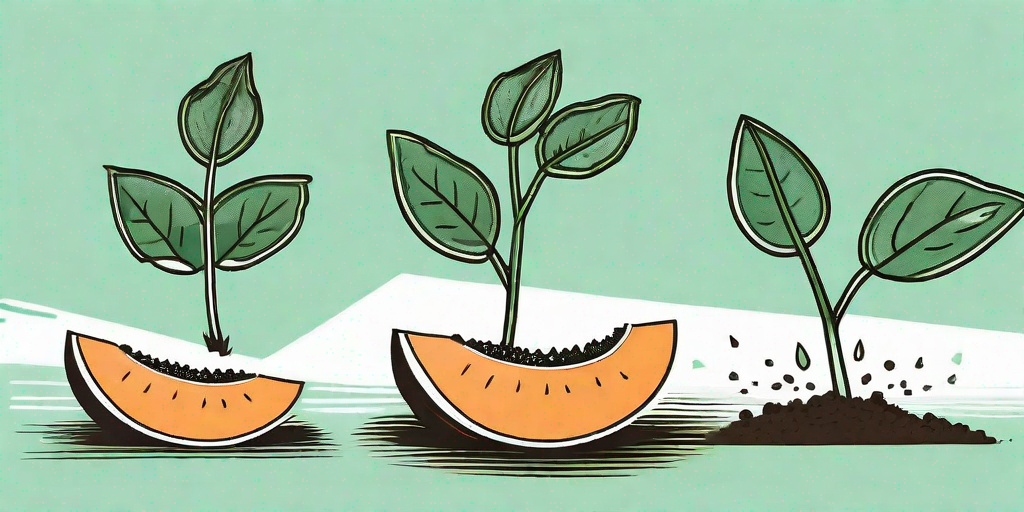
Growing your own cantaloupe plant can be a rewarding journey, filled with anticipation, excitement, and, if all goes well, a sweet, juicy reward at the end. But how does one go from a tiny seed to a bountiful harvest? Fear not, dear reader, for we are about to embark on a horticultural adventure together, exploring the ins and outs of the cantaloupe cultivation process.
Getting Started: Choosing Your Seeds and Preparing Your Soil
Choosing Your Cantaloupe Seeds
First things first, you need to choose your cantaloupe seeds. Not all cantaloupes are created equal, and the type of seed you choose can greatly affect the taste and size of your future fruit. Some popular varieties include the 'Hales Best Jumbo', known for its large size and sweet flavor, and the 'Sugar Cube', a smaller variety with an intense sweetness that packs a punch.
When purchasing seeds, make sure they are from a reputable source. You don't want to put all that effort into growing your plant, only to find out that the seeds were duds. Look for seeds that are labeled as 'high germination rate' to ensure you're getting quality seeds.
Preparing Your Soil
Once you have your seeds, it's time to prepare your soil. Cantaloupes prefer well-draining soil with a pH between 6.0 and 6.5. You can test your soil's pH with a simple kit from your local garden center. If your soil is too acidic or alkaline, you can adjust it with lime or sulfur, respectively.
Additionally, cantaloupes are heavy feeders, so it's a good idea to add some compost or well-rotted manure to your soil before planting. This will provide your plants with the nutrients they need to grow big and strong.
Planting Your Seeds
When and How to Plant
Now that your soil is ready, it's time to plant your seeds. Cantaloupes are warm-season crops, which means they should be planted after the last frost in the spring. If you live in a cooler climate, you can start your seeds indoors about 4-6 weeks before the last expected frost date.
When planting your seeds, place them about 1 inch deep in the soil and space them about 2 feet apart. If you're planting multiple rows, make sure to leave about 4 feet between each row. This will give your plants plenty of room to spread out and grow.
Caring for Your Seedlings
After planting your seeds, make sure to keep the soil moist but not waterlogged. Too much water can cause the seeds to rot, while too little can prevent them from germinating. Once your seedlings emerge, continue to water them regularly, but be careful not to overwater. A good rule of thumb is to water when the top inch of soil feels dry to the touch.
As your seedlings grow, they may need some support. Consider installing a trellis or other support structure to help your plants grow upright and prevent the fruit from touching the ground, where it could rot.
Harvesting Your Cantaloupes
When to Harvest
After all your hard work, it's finally time to harvest your cantaloupes. But how do you know when they're ready? One sign is the color of the fruit. Most cantaloupes will turn from green to a tan or yellow color when they're ripe. Additionally, the fruit should feel heavy for its size and have a sweet smell.
Another sign is the stem. When a cantaloupe is ripe, the stem will naturally separate from the fruit with a gentle tug. This is known as 'slipping' and is a sure sign that your cantaloupe is ready to be enjoyed.
How to Harvest
When harvesting your cantaloupes, use a sharp knife or pruners to cut the stem. Be careful not to damage the fruit in the process. Once harvested, cantaloupes can be stored at room temperature for about a week, or in the refrigerator for a little longer.
And there you have it! From seed to sweetness, you now know how to grow and harvest your own cantaloupe plants. So what are you waiting for? Get out there and start planting!
Frequently Asked Questions
-
How long does it take for a cantaloupe to grow?
From seed to harvest, it typically takes about 70-90 days for a cantaloupe to grow, depending on the variety and growing conditions. -
Can I grow cantaloupes in containers?
Yes, cantaloupes can be grown in containers, as long as they have enough room to spread out. Consider using a trellis or other support structure to help your plants grow upright. -
Do cantaloupes need a lot of sun?
Yes, cantaloupes need full sun to grow. They should receive at least 6 hours of direct sunlight each day. -
What pests and diseases affect cantaloupe plants?
Cantaloupes can be affected by a variety of pests and diseases, including aphids, cucumber beetles, powdery mildew, and fusarium wilt. Regularly check your plants for signs of these issues and treat them accordingly.











